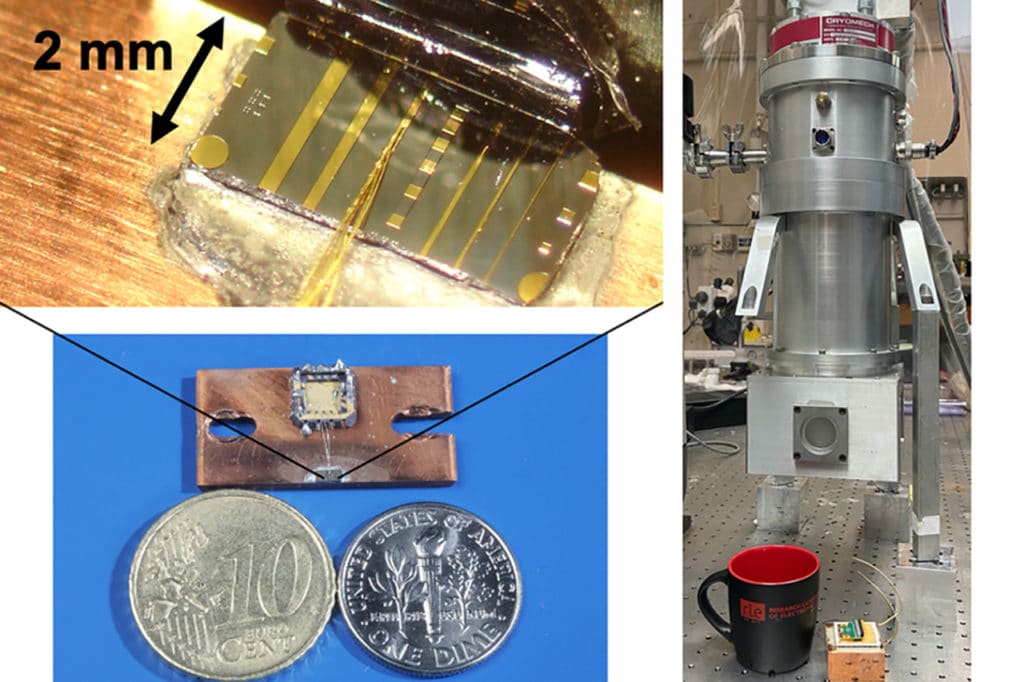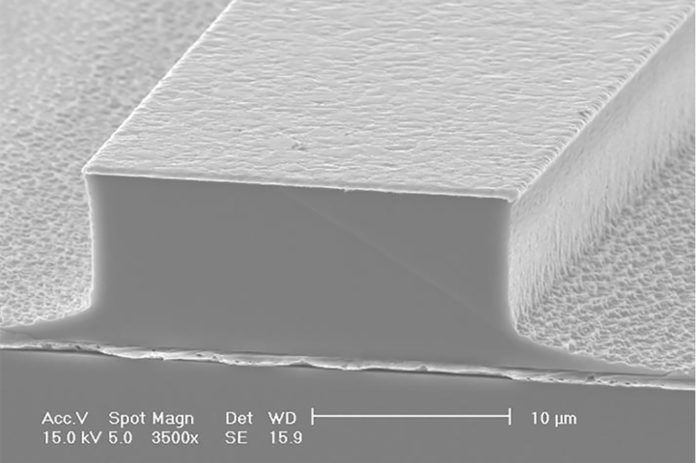Till now, terahertz radiation has been used to perform real-time imaging, and fast spectral measurements required temperatures far below 200 kelvins (-100 degrees Fahrenheit) or lower. Usually, it requires bulky equipment to measure these temperatures. However, those bulky equipment limits the technology used in a laboratory setting.
As a solution, MIT and the University of Waterloo scientists have a high-power, portable version of a quantum cascade laser device that can generate terahertz radiation outside of a laboratory setting. The laser can function at temperatures of up to 250 K (-10 F), meaning that only a compact portable cooler is required.
MIT Distinguished Professor of Electrical Engineering and Computer Sciences Qing Hu said, “With a high operating temperature, we can finally put this in a compact portable system and take this breakthrough technology out of the laboratory. This will enable portable terahertz imaging and spectral systems that will have an immediate impact on wide-ranging applications in medicine, biochemistry, security, and other areas.”
The maximum of 250 K reported in this paper represents a considerable jump from the previous maximum of 210 K, established in 2019, beating a previous 2012 record of 200 K that had stayed untouched for seven years.
Scientists doubled the height of the barriers within the laser. This prevents leakage of the electrons, a phenomenon that tends to increase at high temperatures.
Hu says, “We understood that over-the-barrier electron leakage was the killer,” causing the system to break down if not cooled with a cryostat. So, we put a higher barrier to prevent the leakage, and this turned out to be key to the breakthrough.”
“Previously, higher barriers were explored sporadically, but they yielded inferior results. The prevailing opinion was that increased electron scattering associated with the higher barriers was detrimental, and therefore higher barriers should be avoided.”
Scientists developed the correct parameters for the band structure for tall barriers and a conceptually novel optimization scheme for the design. They then paired their innovation with a ‘direct phonon scheme’ to keep the laser operating through a configuration. Lower lasing levels of each module, or steps of the structure’s staircase, are quickly depopulated of electrons through phonon scattering into a ground state. Which then serves as the injector of electrons into the next step’s upper level, and the process repeats.

Co-author Zbig Wasilewski, professor of electrical and computer engineering and the University of Waterloo Endowed Chair in Nanotechnology, said, “These are very complex structures with close to 15,000 interfaces between quantum wells and barriers, half of which are not even seven atomic layers thick. The quality and reproducibility of these interfaces are of critical importance to the performance of terahertz lasers. It took the best in molecular beam epitaxial growth capabilities — our research team’s key contribution — together with our MIT collaborators’ expertise in quantum device modeling and fabrication, to make such important progress in this challenging sector of THz photonics.”
This portable system is embedded with a compact camera and detector. It can operate anywhere with an electric outlet and could provide real-time imaging during regular skin cancer screenings or even during surgical procedures to excise skin cancer tissues.
Hu said, “The technology could also be applied in many industries where the detection of foreign objects within a product is necessary to assure its safety and quality.”
“Not only can we see objects through optically opaque materials, but we can also identify the substances.”
Benjamin Williams, a professor in the Department of Electrical and Computer Engineering at the University of California at Los Angeles, says the new research opens avenues for future advances. “The MIT/Waterloo work is important because they have demonstrated operation at 250 K. Even though it is not at room temperature, this result shows that there is a real chance for further improvements. In other words, ‘the game is still on’ for all the groups working in this field.”
Hu says he sees “a clear path” to the goal of being able to generate powerful terahertz without needing a cooler.
Journal Reference
- Khalatpour, A., Paulsen, A.K., Deimert, C. et al. High-power portable terahertz laser systems. Nat. Photonics (2020). DOI:10.1038/s41566-020-00707-5
